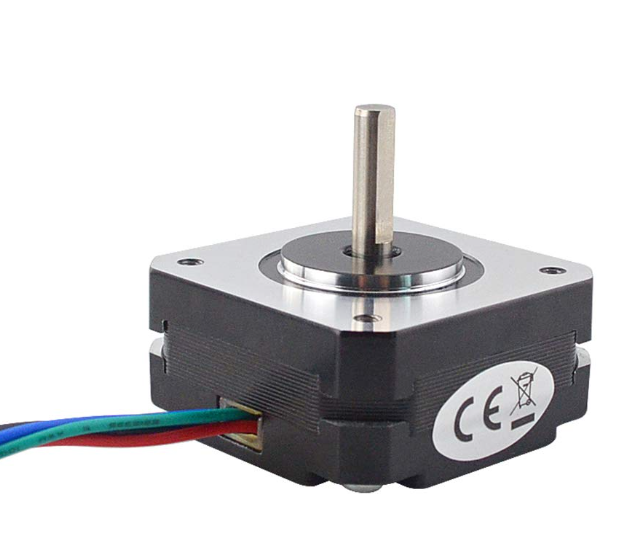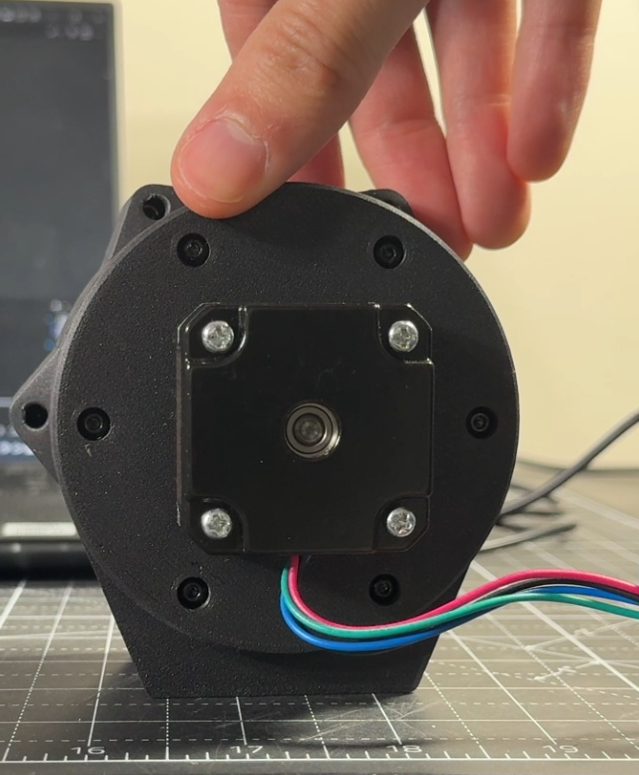I made a 3D printed Cycloidal Drive for a NEMA 17 stepper motor.
The drive has a 20:1 reduction ratio, meaning that for every 20 rotations of the motor shaft, the output plate will rotate once. This speed reduction allows for a greater torque output

The interesting part of this project is that I designed this drive using my online cycloidal simulator.
This tool allows you to play with different parameters to achieve the desired ratio and size. Once you are happy with the design, you are able to download the cycloidal profile to import it into your CAD package. The file format is in DXF, which means you could also directly laser cut it with online services, such as Send Cut Send
The detailed 3D design was done using SolidWorks. I used off-the-shelf hardware to put together the drive.
Normally, these drives require multiple bearings to achieve smooth motion, however, for this proof of concept, I decided to minimize the number of bearings. For example, for the output pins, I used threaded M3 rods with 3D-printed bushings.
The 3D model is available here, feel free to download it and modify the design.

I used a NEMA 17 stepper motor. More specifically, this pancake-style motor that is more compact than the standard NEMA 17.
The torque of a stepper motor is heavily influenced by its length. For this reason, this specific model has a low torque output. However, it is low-cost, compact, and low-weight.

I made a 3D printed Cycloidal Drive for a NEMA 17 stepper motor.
The drive has a 20:1 reduction ratio, meaning that for every 20 rotations of the motor shaft, the output plate will rotate once. This speed reduction allows for a greater torque output
The interesting part of this project is that I designed this drive using my online cycloidal simulator.
This tool allows you to play with different parameters to achieve the desired ratio and size. Once you are happy with the design, you are able to download the cycloidal profile to import it into your CAD package. The file format is in DXF, which means you could also directly laser cut it with online services, such as Send Cut Send

The detailed 3D design was done using SolidWorks. I used off-the-shelf hardware to put together the drive.
Normally, these drives require multiple bearings to achieve smooth motion, however, for this proof of concept, I decided to minimize the number of bearings. For example, for the output pins, I used threaded M3 rods with 3D-printed bushings.
The 3D model is available here, feel free to download it and modify the design.

I used a NEMA 17 stepper motor. More specifically, this pancake-style motor that is more compact than the standard NEMA 17.
The torque of a stepper motor is heavily influenced by its length. For this reason, this specific model has a low torque output. However, it is low-cost, compact, and low-weight.

Let me know if you are interested in seeing a newer version of this drive.
© Me Vertuoso All Rights Reserved 2025